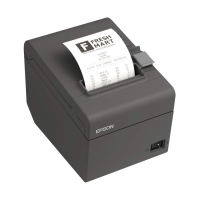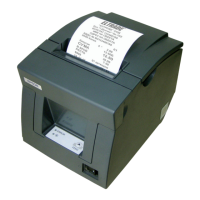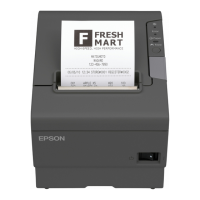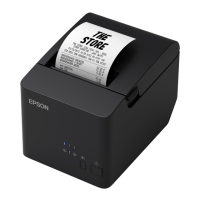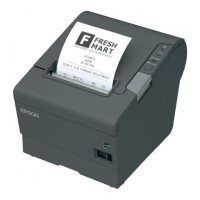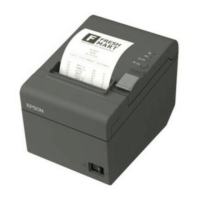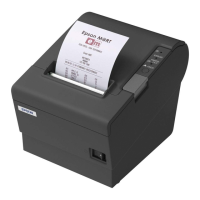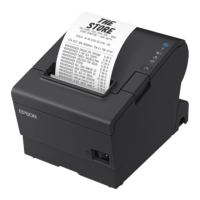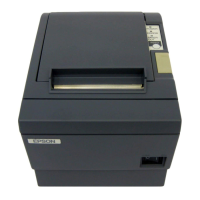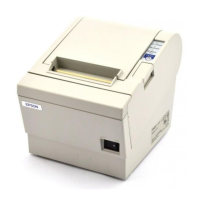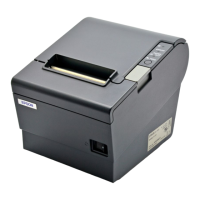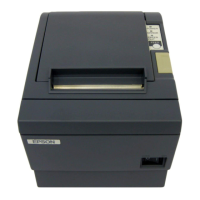
Do you have a question about the Epson TM-T88 and is the answer not in the manual?
| Print Method | Thermal Line Printing |
|---|---|
| Resolution | 180 dpi |
| Auto Cutter | Yes |
| Printer Type | Receipt printer |
| Interfaces | USB, Serial, Ethernet |
| Paper Roll Diameter | 83 mm |
| Power Consumption | 1.8W (Standby) |
| Paper Width | 80 mm or 58 mm (with paper width guide) |
| Power Supply | Internal (depending on the model) or External |
Identifies key physical parts of the printer, including covers and the control panel.
Details various labels affixed to the printer for operational guidance and warnings.
Guides users to the section detailing the printer's physical components and labels.
Provides information on where and how to order thermal roll paper for the printer.
Directs users to instructions for initial printer setup and configuration.
Guides users on the process of loading or changing the paper roll.
Points users to the troubleshooting section for resolving printer issues.
References the section that details the printer's command set.
Lists EMI and safety standards applied in Europe, North America, and Japan.
Explains the organization of the manual, including setup, reference, and troubleshooting sections.
Highlights the key features, printing performance, and software aspects of the printer.
Describes essential aspects of printer operation, maintenance, and user interaction.
Identifies the required thermal roll paper specifications.
Lists authorized suppliers for paper and supplies in different regions.
Provides a list of other suppliers for compatible thermal paper.
Technical details on printing method, speed, and character spacing.
Information on paper roll size, diameter, and width.
Details on power supply voltage and current consumption.
Data on mechanism life, thermal head endurance, and auto cutter durability.
Operating and storage requirements for temperature and humidity.
Reference tables for character encoding and display.
Instructions for unpacking the printer and checking its contents.
Details on connecting interface cables and grounding the printer.
Instructions for connecting the cash drawer to the printer.
Procedure for properly grounding the printer unit.
Steps to connect the printer's power supply unit safely.
Guidance on loading and changing the paper roll.
Using the power switch cover and performing the printer's self-test.
Details on configuring DIP switches and near-end sensor settings.
How to use the printer's control panel buttons for operation.
Explanation of the status indicator lights on the control panel.
Solutions for common issues like power or connectivity.
Troubleshooting steps for print quality and output issues.
Procedure for cleaning the printer's thermal print head.
Resolving issues related to paper jams and feeding.
Troubleshooting steps for the automatic paper cutter.
Using the hexadecimal dump feature for advanced diagnostics.
Technical details on printing method, speed, and character spacing.
Information on paper roll size, diameter, and width.
Details on power supply voltage and current consumption.
Data on mechanism life, thermal head endurance, and auto cutter durability.
Operating and storage requirements for temperature and humidity.
Reference tables for character encoding and display.
Understanding command syntax, terms, and basic control commands.
Details on the functions of the printer's DIP switches.
How to adjust the print density settings using DIP switches.
Step-by-step guide to modifying DIP switch configurations.
Procedure to calibrate the paper near-end detection sensor.
